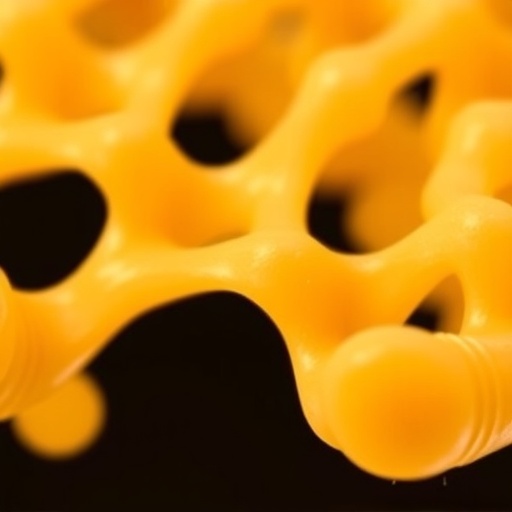Revolutionizing Orthopedic Medicine: The Rise of Growth Factor-Infused 3D Printed Scaffolds
Advancements in bone tissue engineering have profoundly transformed the landscape of orthopedic treatment in recent years. At the forefront of this revolution is the integration of growth factors into 3D printed scaffolds, a cutting-edge technology that promises to redefine the management of fractures, bone defects, arthritis, and other debilitating skeletal conditions. Traditional bone grafting methods—hindered by limited availability of autologous bone, immune rejection concerns, and suboptimal bone regeneration rates—have long posed significant clinical challenges. The emergence of 3D printing technology, combined with bioactive molecules, is now paving the way for highly personalized and efficient therapeutic strategies in orthopedic medicine.
The fundamental principle behind this innovation lies in the synergistic action of growth factors and biocompatible materials structured within a 3D scaffold. Growth factors such as bone morphogenetic proteins (BMPs), platelet-derived growth factors (PDGFs), transforming growth factors (TGFs), and vascular endothelial growth factors (VEGFs) are biologically potent molecules capable of stimulating the proliferation and differentiation of osteoblasts—the cellular architects of new bone tissue. When embedded within a meticulously designed scaffold, these molecules guide the cellular microenvironment towards enhanced osteogenesis and vascularization, ultimately accelerating bone remodeling and healing processes.
3D printing technology offers unprecedented control over the architecture of scaffolds, enabling the fabrication of porous structures that mimic the natural extracellular matrix of bone. This precise pore design not only fosters cell attachment and vascular infiltration but also serves as an optimal reservoir for growth factors. Controlling the spatial distribution and temporal release of these proteins is critical for maximizing their biological activity and avoiding rapid degradation or undesired side effects. Innovations in scaffold material composition and loading techniques have thus focused on improving the stability and bioavailability of growth factors within the 3D printed constructs.
Recent studies highlight the versatility of materials used in these scaffolds, ranging from synthetic polymers like polycaprolactone (PCL) and polylactic acid (PLA) to bioactive ceramics such as hydroxyapatite and beta-tricalcium phosphate. These materials are selected based on their mechanical strength, degradation profiles, and compatibility with growth factors and living cells. For instance, hybrid scaffolds combining polymeric matrices with ceramic nanoparticles demonstrate enhanced osteoconductivity while maintaining the flexibility and printability required to fabricate patient-specific implants.
Loading growth factors onto scaffolds can be executed through various techniques, including physical adsorption, covalent bonding, or encapsulation within micro- or nanoparticles. Each method presents unique kinetics of release, impacting the timing and duration of growth factor signaling. Sustained release systems have gained particular interest as they better replicate physiological healing cues by ensuring a prolonged presence of bioactive molecules at the defect site, thus promoting continuous regeneration rather than a transient burst.
Clinical relevance is further underscored by the customizable nature of 3D printed scaffolds, which allows for the tailoring of scaffold geometry and growth factor combinations according to individual patient anatomy and pathology. Such personalization is particularly advantageous in complex cases involving critical-sized bone defects or revisions of failed grafts, where conventional treatments may fall short. The capacity to integrate imaging data directly into the design workflow ensures precise defect conformity and better biomechanical integration upon implantation.
The integration of angiogenic factors such as VEGF alongside osteogenic agents like BMPs within a single scaffold embodies the dual requirement of bone regeneration: new bone formation and vascular supply. The orchestration of osteogenesis and angiogenesis is vital, as vascular networks provide nutrients and oxygen essential for cell survival and matrix deposition. This multifunctional approach is likely to yield more durable and functional bone repairs, reducing complications and accelerating patient recovery.
Beyond experimental and translational research, several preclinical studies and initial clinical trials have demonstrated encouraging outcomes with growth factor-loaded 3D printed scaffolds. Enhanced bone volume, improved mechanical strength, and faster integration with host tissue have been reported across animal models of large bone defects. These findings fuel optimism for imminent clinical applications and regulatory approvals, heralding a new era in orthopedic regenerative medicine.
Nevertheless, challenges remain in optimizing scaffold design parameters, growth factor dosages, and release kinetics to balance efficacy and safety. The high cost and complexity associated with growth factor procurement and scaffold fabrication may also affect widespread adoption. It is imperative that ongoing research addresses these barriers through scalable manufacturing processes and cost-effective growth factor alternatives such as recombinant proteins or gene therapy vectors.
In conclusion, the confluence of biomaterials science, molecular biology, and 3D printing technology is catalyzing a paradigm shift in orthopedic treatment modalities. Growth factor-containing 3D printed scaffolds represent a promising frontier with vast potential to improve clinical outcomes in bone repair and regeneration. Continued interdisciplinary collaboration and innovation are essential to translating these advances from the bench to bedside, ultimately enhancing the quality of life for patients with musculoskeletal disorders worldwide.
Subject of Research: Advances in growth factor-containing 3D printed scaffolds for orthopedic applications and bone tissue engineering.
Article Title: Advances in growth factor-containing 3D printed scaffolds in orthopedics.
Article References:
Zhan, L., Zhou, Y., Liu, R. et al. Advances in growth factor-containing 3D printed scaffolds in orthopedics.
BioMed Eng OnLine 24, 14 (2025). https://doi.org/10.1186/s12938-025-01346-z
Image Credits: Scienmag.com
DOI: https://doi.org/10.1186/s12938-025-01346-z
Keywords: bone tissue engineering, 3D printing, growth factors, bone morphogenetic proteins, platelet-derived growth factors, transforming growth factors, vascular endothelial growth factors, scaffold design, osteogenesis, angiogenesis, orthopedic regeneration




